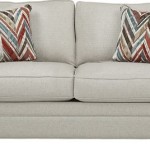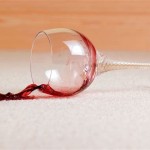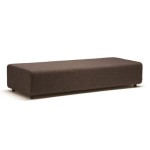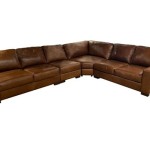Leather Sofa Cushions Sagging: Causes and Solutions
Sagging cushions are a common problem with leather sofas, diminishing their comfort and aesthetic appeal. Understanding the causes of this issue empowers owners to take preventative measures and implement effective solutions.
Causes of Sagging Leather Sofa Cushions
Several factors contribute to the sagging of leather sofa cushions. Identifying the root cause is crucial for selecting the appropriate remedy.
1. Frame Issues: A weakened or broken sofa frame can no longer adequately support the cushions, leading to sagging. This is often characterized by noticeable instability in the overall sofa structure.
2. Low-Quality Cushion Filling: Cushions filled with low-density foam, feathers, or other inexpensive materials are more prone to losing their shape and resilience over time, resulting in a flattened appearance.
3. Regular Use and Wear: Everyday use puts stress on the cushions. Over time, the materials compress and lose their ability to spring back, leading to a gradual sagging effect.
4. Improper Care: Neglecting regular maintenance, such as flipping and fluffing cushions, can accelerate the sagging process. Exposure to direct sunlight and extreme temperatures can also degrade the cushion materials.
5. Moisture and Humidity: Leather is a natural material susceptible to absorbing moisture. High humidity levels can weaken the leather and the cushion filling, contributing to sagging.
Solutions for Sagging Leather Sofa Cushions
Addressing sagging cushions can involve several approaches, from simple DIY fixes to professional interventions.
Adding Support to Existing Cushions
1. Cushion Inserts: Inserting firm foam or fiberfill inserts can provide additional support and lift to sagging cushions. These inserts are available in various sizes and thicknesses to fit different cushion types.
2. Replacing the Filling: For cushions with severely degraded filling, completely replacing the internal material with high-density foam, down feathers, or a combination of materials can restore their original shape and firmness. This often involves opening the cushion cover and replacing the filling manually or seeking professional upholstery services.
3. Plywood Support: Placing a sheet of plywood beneath the cushions can provide extra support and distribute weight more evenly, preventing further sagging, particularly if the sofa frame is contributing to the problem.
Addressing Underlying Structural Issues
1. Repairing or Replacing the Frame: If a damaged frame is the root cause of the sagging, professional repair or replacement may be necessary. This involves dismantling the sofa to access and fix the frame components.
2. Reinforcing the Frame: Adding extra support to a weakened frame can prevent further sagging. This might involve adding wooden braces or metal supports to reinforce the existing structure.
Preventative Measures
Taking proactive steps can help prevent sagging cushions and extend the lifespan of a leather sofa.
1. Regular Fluffing and Rotation: Frequently fluffing and rotating the cushions helps distribute wear evenly and prevent premature sagging. Flipping and rotating cushions weekly is recommended.
2. Using Cushion Protectors: Cushion protectors provide a barrier against spills, stains, and everyday wear, helping to maintain the shape and integrity of the cushions.
3. Controlling Humidity: Maintaining a consistent humidity level in the room can help prevent the leather and cushion filling from absorbing excess moisture. Using a dehumidifier can be beneficial in humid climates.
4. Avoiding Direct Sunlight: Prolonged exposure to direct sunlight can fade the leather and degrade the cushion filling, accelerating the sagging process. Positioning the sofa away from windows or using window coverings can help protect it from sun damage.
5. Professional Cleaning and Conditioning: Regularly cleaning and conditioning the leather helps maintain its suppleness and prevents it from drying out and cracking, which can contribute to cushion sagging. Following manufacturer recommendations for cleaning and conditioning is crucial.
Choosing High-Quality Leather Sofas
Investing in a high-quality leather sofa from the outset can minimize the risk of sagging cushions. Look for sofas constructed with durable frames, high-density cushion filling, and high-grade leather.
1. Frame Construction: Kiln-dried hardwood frames are generally more robust and less prone to warping or breaking than softer wood frames.
2. Cushion Fillings: High-resilience foam or a combination of down feathers and foam core offer superior support and longevity compared to low-density foam or feather-only fillings.
3. Leather Quality: Top-grain or full-grain leather is more durable and resistant to wear than split-grain or bonded leather.
By understanding the causes of sagging leather sofa cushions and implementing appropriate solutions and preventative measures, owners can preserve the comfort, appearance, and longevity of their furniture.

How To Plump Up An Old Saggy Sofa For Around 40 Leather Couch Fix Furniture Repair

Why Leather Couches Sag And How To Prevent It Fibrenew International

How To Fix A Sagging Couch Sofa Quick And Easy

Restuffing Leather Couch Cushions And Foam Replacement

How To Fix A Leather Sagging Sofa Super Simple

Easy Inexpensive Saggy Couch Solutions Diy Makeover Love Of Family Home

Easy Leather Couch Repair

How To Fix Sagging Couch Cushions Thistlewood Farm
Sofa Cushion Foam Replacement Wefixanysofa Com

Tip How To Easily Fix Saggy Couch Cushions Instrupix








